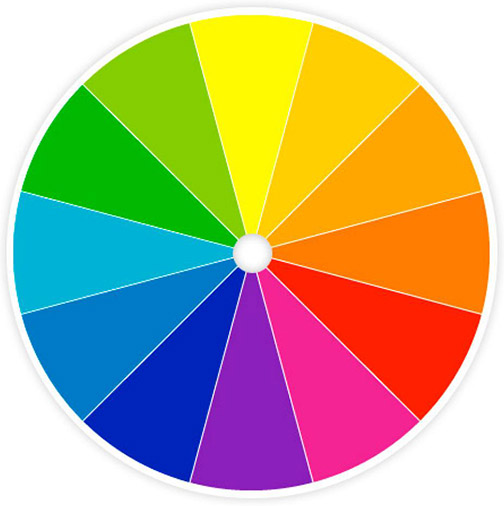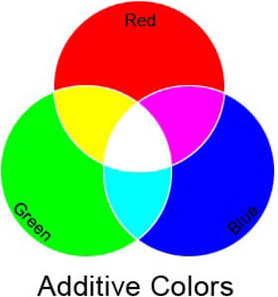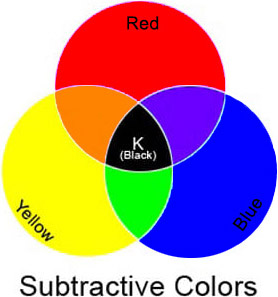
It’s surprising the number of artists I encounter who have never been introduced to the color wheel and the important role it plays in color theory. Many have seen it, but most have never been shown how to use it. Yet, it’s one of the most important tools in your paintbox.
The color wheel can help you identify the true color present in your subject matter, especially in the shadows, help you properly mix and mute paints and chose an appropriate palette for establishing the mood of your undertaking.
There are actually two color systems (three if you include the Munsell’s system), one for the color of light, Additive Color and one for color of pigment, Subtractive Color. I’ll give you a brief description of both systems (we’ll save discussion of Munsell’s system for a later time) and then describe how to use the Subtractive color wheel to your benefit in painting.
 Additive color theory is important to understand, though, since it is all about how the LIGHT color spectum functions, unless you’re a photographer or lighting director in theater or film you won’t have the opportunity to manipulate it. It is the system by which you view color in the world. The primary colors in the Additive color system are red, blue and green (not red, blue and yellow, the primaries in the Subtractive color system). Mixing all 3 primaries results in white light. When you see an object as red, like an apple, the molecular make up of the apple is such that it is absorbing all colors in the light spectrum, but red. Because the apple can’t absorb the red light, the red light rays bounce off the surface of the apple and back to your eye. Ironically, you could say the apple is every color but red, since it’s absorbing all the other colors in the light spectrum, but red.
Additive color theory is important to understand, though, since it is all about how the LIGHT color spectum functions, unless you’re a photographer or lighting director in theater or film you won’t have the opportunity to manipulate it. It is the system by which you view color in the world. The primary colors in the Additive color system are red, blue and green (not red, blue and yellow, the primaries in the Subtractive color system). Mixing all 3 primaries results in white light. When you see an object as red, like an apple, the molecular make up of the apple is such that it is absorbing all colors in the light spectrum, but red. Because the apple can’t absorb the red light, the red light rays bounce off the surface of the apple and back to your eye. Ironically, you could say the apple is every color but red, since it’s absorbing all the other colors in the light spectrum, but red.
 In subtractive color theory the primary colors are the more familiar red, blue and yellow. This is the system we work in, when we mix paints. The combination of all three primaries in this system result in black. You’re mixing pigments in this system, not light. Your eye perceives the colors you mix, however, in the same way it perceives the colors of the light spectrum. The molecular structure of any particular pigment color absorbs all color but the color you perceive. Blue, for example, absorbs all colors of the spectrum accept blue light and, therefore, bounces or reflects the blue light back to your eye.
In subtractive color theory the primary colors are the more familiar red, blue and yellow. This is the system we work in, when we mix paints. The combination of all three primaries in this system result in black. You’re mixing pigments in this system, not light. Your eye perceives the colors you mix, however, in the same way it perceives the colors of the light spectrum. The molecular structure of any particular pigment color absorbs all color but the color you perceive. Blue, for example, absorbs all colors of the spectrum accept blue light and, therefore, bounces or reflects the blue light back to your eye.
Confused? I know this can be a little disorienting at first. Be comforted in knowing it’s not as important to understand how the eye physically perceives color, as it is to understand how the color wheel can help you work with color, when you’re painting. I think I’ve probably given you enough to ponder here, so I’ll break this one post in two and cover the function of the color wheel and its benefits to the painter in my next post.
